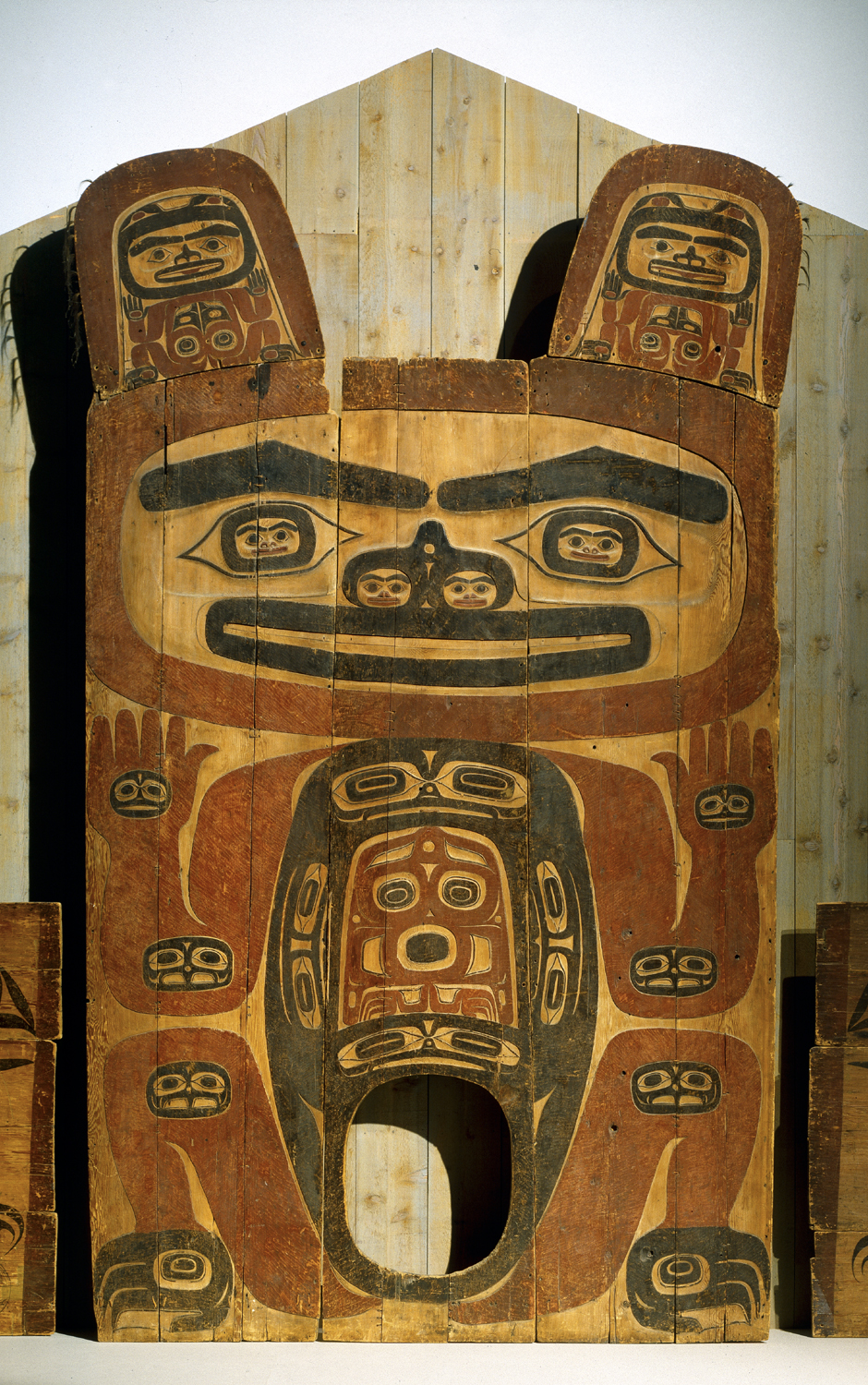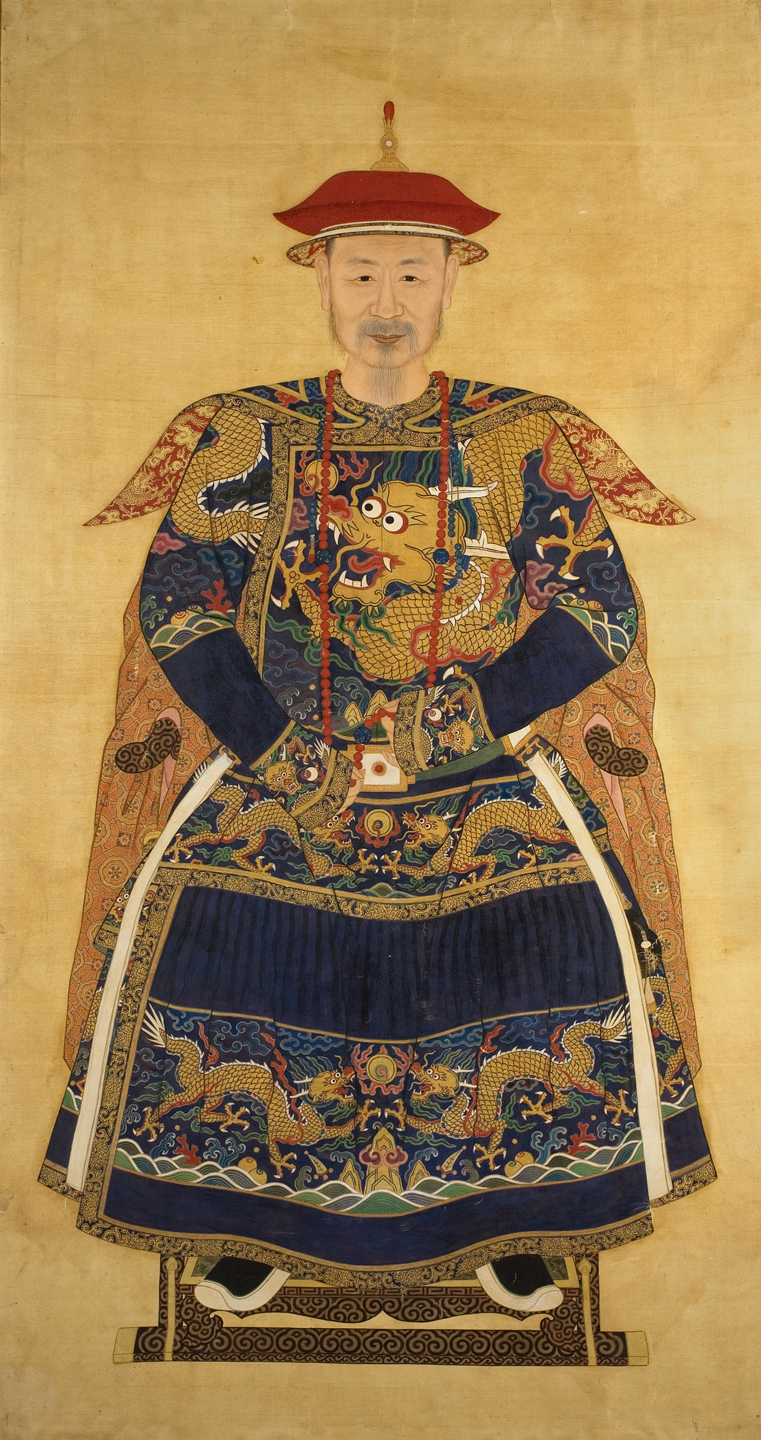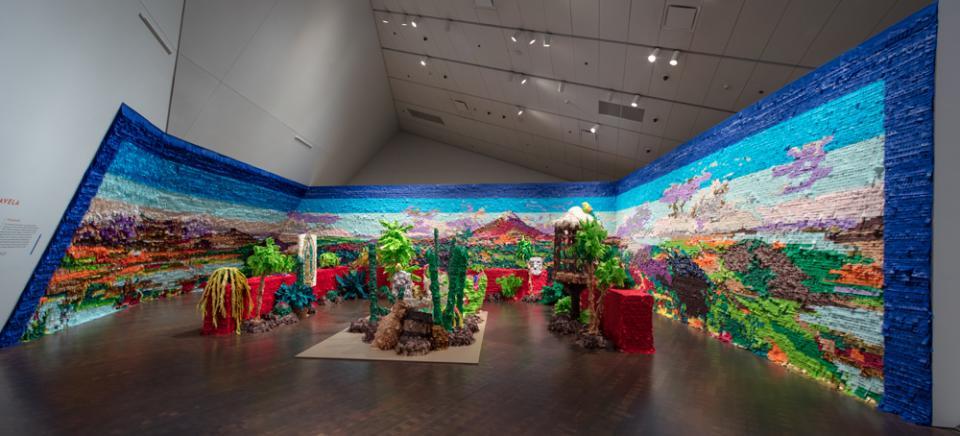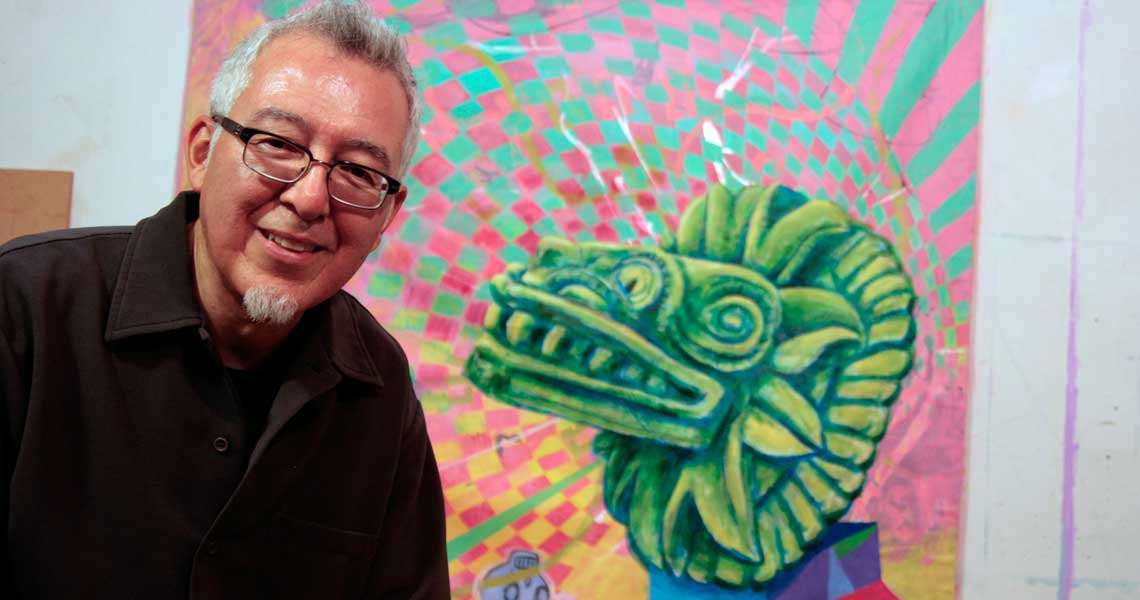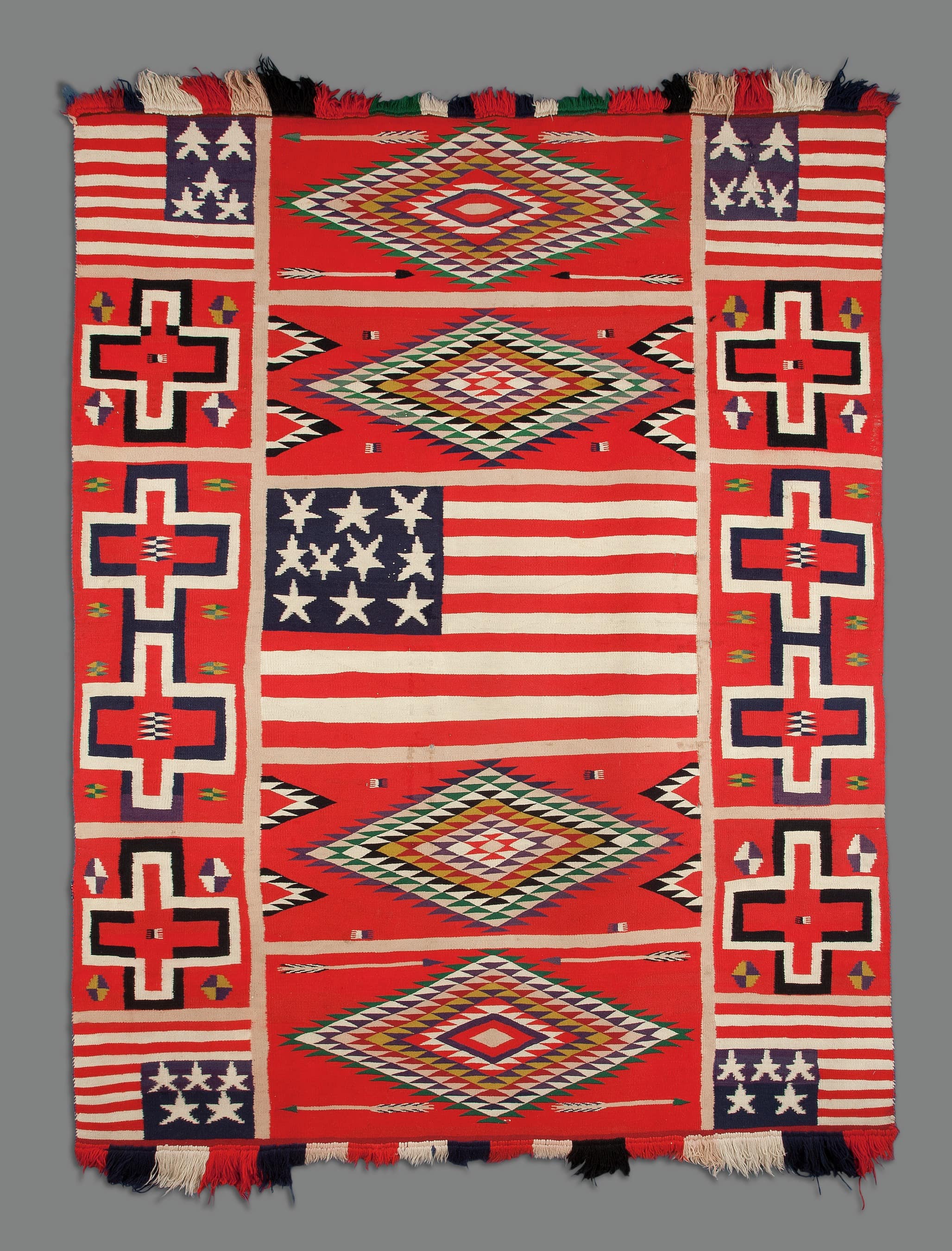Students will use the Tlingit House Partition to help develop their powers of observation and explore the shapes and animals around them. They will explore shapes and the bear images in the Tlingit House Partition and then create their own work of art arranging shapes and pictures of animals they’ve cut out on their own.
Students will be able to:
- point out the bear images in the Tlingit House Partition;
- name at least three shapes they see in the partition;
- identify at least three shapes they see in the classroom;
- name at least two wild animals in their home and/or school communities; and
- cut out pictures of shapes and animals and arrange them in a pattern that is aesthetically pleasing to the child.
Lesson
- Warm-up: Show children a shape and ask them to move a place in the classroom where they find an object with that shape. Do so for at least four shapes.
- Have children sit in a circle. Present the pictures of the Tlingit House Partition.
- Ask children to volunteer to point out different shapes on the picture. You can say the name of the shape first or have the children come up with the shape and then find it.
- Ask what else the children see in the picture. Help them see the bears if they can. Talk about what wild animals children have seen in their neighborhoods or around school. (Most have probably seen birds, but others may have seen animals such as mice, coyotes, and even foxes.)
- Have students move to the work area. Help them cut out images of different shapes and wild animals. Assist children as needed.
- Tell the children that they are going to make their own work of art. Allow them time to place what they cut out onto a larger sheet of paper, using glue sticks or paste to affix the pictures.
- Take a brain break and put on some music without lyrics and have the children move around like some of the animals they have been cutting out.
- Sit in a circle and have the children share their pictures. Ask their classmates to point out shapes and animals that they see in each one.
Materials
- Photocopies of shapes for children to cut out and piece together like a puzzle
- Magazine pictures of different animals children might see in their communities for them to cut out
- One larger blank sheet of white paper for each child
- Music and a CD or tape player
- About the Art section on the Tlingit House Partition
- One color photocopy of the Tlingit House Partition for every four children, or the ability to project the image onto a wall or screen
Standards
- Visual Arts
- Invent and Discover to Create
- Observe and Learn to Comprehend
- Relate and Connect to Transfer
- Language Arts
- Oral Expression and Listening
- Critical Thinking & Reasoning
- Information Literacy
- Invention
- Self-Direction
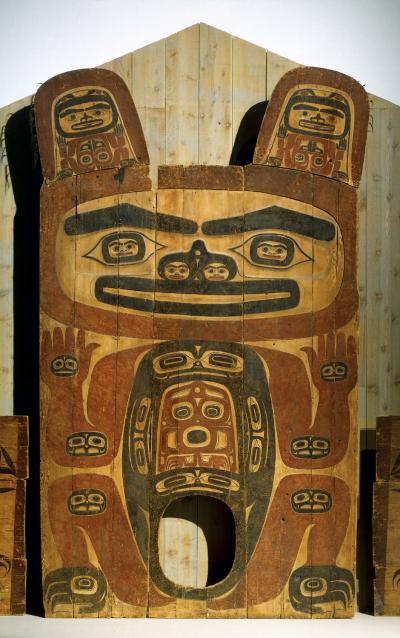
House Partition with Shakes Family Crest
Artist not known, Tlingit
About 1840
15 ft. X 9 ft.
Native arts department acquisition funds, 1951.315
Photograph © Denver Art Museum 2008. All Rights Reserved.
This partition comes from the house of Chief Shakes of Wrangell, Alaska, who belonged to the Nanyaayi clan of the Tlingit tribe. The Tlingit lived in groups or villages along the Pacific Coast of what is now southern Alaska and northern British Columbia. Each child was born into one of two groups, called moieties. Within each moiety, there were several smaller groups called clans. The Tlingit were skilled artisans and master woodcarvers, known for their elaborate totem poles, bentwood boxes, and canoes. They had extensive trade contacts and dealt in many different types of goods, which were made by their own tribe as well as others. Animals played an important role in the Tlingit belief system. The Tlingit believed that animals and humans were closely related and that every animal had a soul. They also believed that an animal could take on the form of a human, as is evident in many of their stories. Some stories involve animals and humans changing from one species to the other, while others tell of animals and humans living together and sometimes marrying one another. Even though the Tlingit people had to rely upon hunting and fishing for survival, no animal was ever killed needlessly. Hunters followed strict rituals and asked for forgiveness at the end of the hunt, thanking the animal for giving its life.
Screens like this one were used in large wooden houses to separate the clan leader’s sleeping area from the central areas of the house. Clan houses were large and there could be up to six families living in each one. Screens fronting the sleeping quarters of nobility were painted with important family crests, which are symbols used to represent individual families. The clan leader would enter and exit the room through the hole in the center of the crest—a symbol of rebirth from his ancestors. Sometimes the screens were removed to open up the space for ceremonies. In front of these private rooms was a platform where the owner and his family sat. The image of the brown bear represents the crest of the Shakes family, which memorializes a clan myth in which two brown bears escaped death in a flood by climbing a mountain. The Indians killed one of the bears and took its head and skin to wear as a family crest during festivals. In another clan story, during the time when animals and humans were believed to have married, a male ancestor is said to have been captured by bears and forced to marry the female bear. Having managed to escape, he kept the bear symbol as a clan symbol.
Details
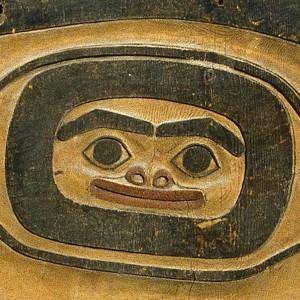
Faces
Faces appear at the joints, eyes, nostrils, and hands of the bear. The small bear figures inside the ears distinguish the crest of the Shakes family from other groups within the clan.
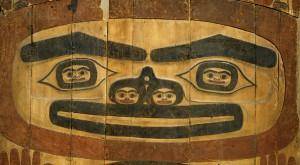
Formline
The formline delineates each of the forms. Usually the formline is painted in black; however, this screen’s formline is red.

Ovoid & U Forms
These are the building blocks of Northwest Coast art. Ovoid is the most common shape—a kind of rounded rectangle. This shape is used to form the face, eyes, and small faces that appear at the joints. U forms are usually thick on one end, thinner on the other.
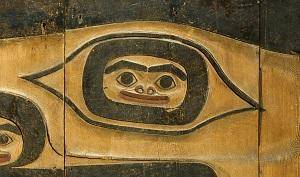
Low Relief
The screen was carved in low relief, meaning that the design projects only slightly from the surface of the wood; it is not three-dimensional. The design was then painted with red and black, which are fairly traditional colors.
Funding for object education resources provided by a grant from the Morgridge Family Foundation. Additional funding provided by the William Randolph Hearst Endowment for Education Programs, and Xcel Energy Foundation. We thank our colleagues at the University of Denver Morgridge College of Education.
The images on this page are intended for classroom use only and may not be reproduced for other reasons without the permission of the Denver Art Museum. This object may not currently be on display at the museum.
